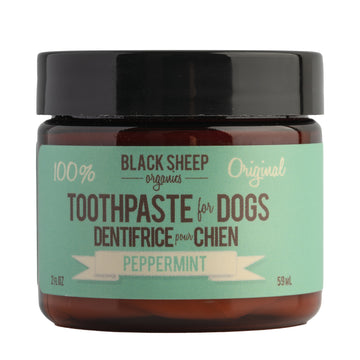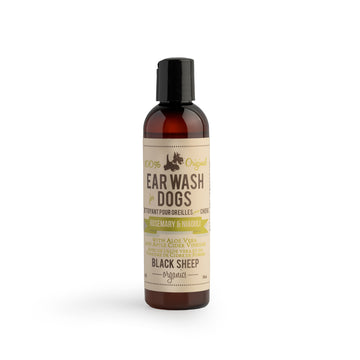Winter Fashion for Furry Friends: Should Dogs Wear Clothes?
May 25, 2024
When winter chills settle in, pet owners often wonder if their furry companions need extra protection. While some breeds boast thick, insulating coats, others might leave the park shivering. This post explores the world of winter fashion for dogs, delving into the practical considerations of canine clothing. We'll examine the factors influencing your decision, from breed characteristics to weather conditions, to help you determine if a coat is the right fit for your four-legged friend.
Understanding Your Dog's Natural Coat
According to research, dogs have developed ways to maintain their internal temperature despite external conditions. Their coats have two main types of hair: the longer guard hairs and a softer, denser undercoat. The guard hairs repel moisture and dirt, protecting the skin, while the undercoat acts as insulation, trapping air and body heat. This dual-layer system helps keep dogs warm in winter but also prevents overheating by allowing air circulation close to the skin.
When to Consider Clothing Your Dog?
As winter's chill sets in, the question of whether our four-legged friends need an extra layer to keep warm comes up frequently. While it's true that not every dog will require clothing during the colder months, there are specific situations and signs that indicate when it might be necessary for your pet's comfort and health.
Signs Your Dog Might Be Feeling Cold
Observing your dog's behavior and physical reactions in cold weather can provide clear indicators that they might benefit from a little extra warmth:
- Shivering or Trembling: Just like humans, dogs shiver when cold, a clear sign they're not comfortable.
- Hesitation to Go Outside: If your dog is usually enthusiastic about walks but suddenly seems reluctant, the cold might be to blame.
- Hunching and Tucking Tail: A dog trying to conserve body heat may hunch their back and tuck their tail close to their body.
- Seeking Shelter or Warm Places: Finding your dog frequently seeking warmth under blankets or near heat sources can indicate they're feeling cold.
Situations Where Extra Warmth Is Necessary
Certain conditions make it more likely your dog will appreciate the added insulation of a sweater or coat:
- Short-Haired and Small Breeds: Dogs with thin coats or smaller body sizes, such as Chihuahuas or Greyhounds, lose heat more rapidly than larger, furrier breeds and can benefit significantly from wearing a coat.
- Senior Dogs: As dogs age, their ability to regulate body temperature diminishes, making them more susceptible to the cold.
- Medical Conditions: Pets with health issues, especially those affecting hair growth or metabolism, may need extra warmth.
- Extreme Weather: In particularly harsh winter conditions, even dogs with thicker coats might appreciate the added protection against the elements, especially when the temperature drops below 40 degrees Fahrenheit.
Choosing the Right Winter Wardrobe for Your Furry Friends
The necessity of winter clothing for dogs is often debated, with various factors influencing the decision. Let's explore how to ensure your dog stays warm and comfortable during the colder months, drawing from expert advice and veterinary recommendations.
Factors to Consider
When selecting winter wear for your dog, three key aspects should guide your choice:
- Material: Breathable yet insulating materials like fleece or wool are ideal, offering warmth without overheating. According to the American Kennel Club, these fabrics provide the necessary insulation for most dogs in cold weather.
- Fit: A snug, but not tight, fit ensures your dog can move freely without the garment slipping off or causing discomfort. It's essential to measure your dog before purchasing to avoid any guesswork.
- Comfort: Above all, your dog's comfort is paramount. Select clothes that are easy to put on and take off, and avoid items with potentially dangerous embellishments like small buttons.
Recommended Types of Clothing
Based on expert advice and veterinary recommendations:
- Sweaters are suitable for indoor warmth or brief outings. They should be made of stretchy, soft material for comfort and ease of movement.
- Coats are necessary for longer excursions in the cold. Waterproof and insulated options are good, with features like reflective strips for safety during early morning or late evening walks.
- Protective Footwear protects your dog's paws from icy surfaces, salt, and sharp objects, helping to prevent injuries and discomfort.
Safety Tips
Safety should never be overlooked:
- Inspect clothing for small, detachable parts that could pose choking hazards.
- Choose apparel with reflective elements or add a reflective vest to ensure your dog is visible during low-light conditions.
Practical Tips for Dressing Your Dog
Introducing your dog to clothing should be a gradual and positive experience:
- Start Slowly: Begin with lighter garments and gradually move to heavier pieces as your dog gets used to wearing clothes.
- Create Positive Associations: Use treats and praise to encourage your dog each time they wear their clothes, making it a rewarding experience.
- Practice Indoors: Before heading outside, allow your dog to wear their new clothes around the house. This helps them adjust in a familiar environment.
- Watch for Discomfort: Pay close attention to your dog’s behavior while clothed. Signs of discomfort could indicate an issue with the fit or the material of the clothing.











